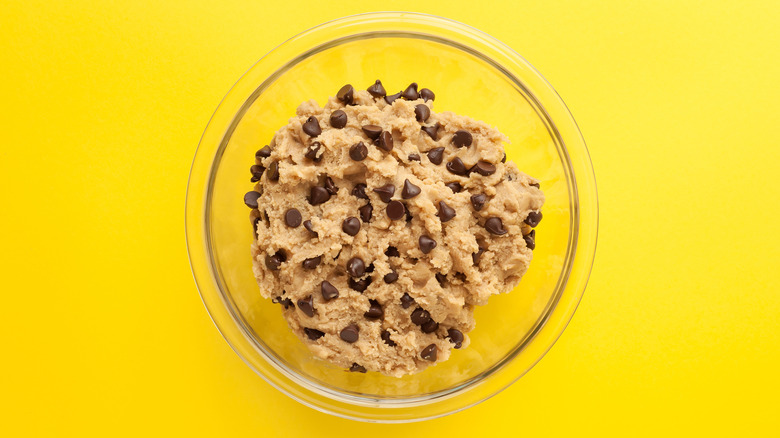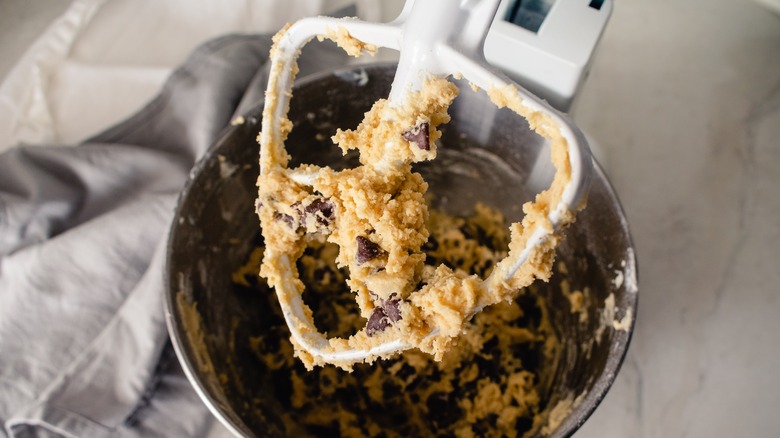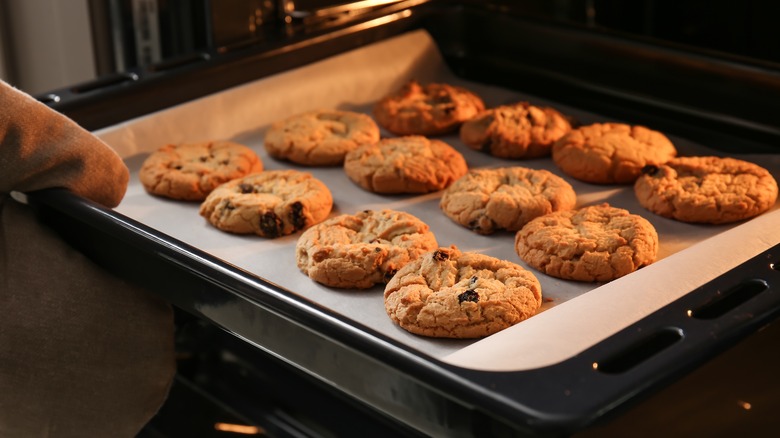The Telltale Signs That Your Cookie Dough Is Overmixed Or Undermixed
When you're craving something sweet, homemade cookies can be a delicious treat. Whether you bake them completely from scratch or use a pre-packaged mix from the grocery store, biting into a warm cookie fresh from the oven is truly a delight. However, no matter how experienced you are as a baker, there are a few common mistakes that could make your treats less than perfect.
If you don't chill your dough prior to baking, your cookies may not have the right texture after baking. Chilling is especially important when you're making shaped cutout cookies, which may spread if the dough is too warm before putting them in the oven. It's also important to make sure you're using the right consistency of butter pertaining to each recipe.
Another mistake that's easy to make when baking is over or undermixing your cookie dough. It's important to find that sweet spot of just perfectly mixed dough, otherwise, the texture and consistency could easily be compromised.
Your cookies could crumble if the dough isn't right
Undermixed dough might not have all the ingredients fully incorporated together and can wind up dry and crumbly. If you're really unlucky, you might even wind up with a pocket full of flour, which could make for an especially unpleasant bite after baking. One easy way to tell if your dough is undermixed is to check its color. If all ingredients have been adequately mixed, the dough should have an even color and appearance throughout.
Conversely, if your dough is overmixed, extra air is added to the dough during the mixing process, which can cause your cookies to go flat once they are baked. This excess air can also cause the dough to develop too much gluten. If anything, you should aim for minimal gluten in cookies, as too much of it could make the finished cookies too dense and overly chewy.
There is a way to save the dough
Fortunately, if you discover that you may have improperly mixed your dough, there are a few ways to save it. If your cookie dough has been undermixed, all you'll need to do is continue mixing it around until the dough's ingredients are thoroughly incorporated. Then, you can scoop the dough out and bake the recipe as normal.
If you wind up overmixing your dough, it may need a little extra work to revive it. The gluten in the dough can relax and soften a little if the dough is left out to settle at room temperature. Once it's set out, you can cover the bowl with plastic wrap since prolonged exposure to air could dry the dough out. You could also opt to add wet ingredients such as butter or milk if the resulting overmixed dough is especially dry. Once the cookie dough has sat and warmed up for an hour or two, you can scoop the dough directly onto the baking sheet — just be careful not to mix it anymore.


